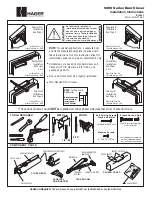
Design and function
TIG welding
299-020200-TWD01
14.07.2017
27
5.3.4
AC welding
5.3.4.1 AC balance (optimise cleaning effect and penetration characteristics)
To weld aluminium and aluminium alloys, AC welding is used in combination with a continuous change in
polarity of the tungsten electrode. The process encompasses two phases (half-waves): a positive and a
negative one. The positive phase cracks the aluminium oxide layer on the material surface (so called
cleaning effect).
At the same time, tungsten balling occurs at the tip of the tungsten electrode. The size of this balled end
depends on the length of the positive phase. Please note that an excessively big balled end will cause the
arc to become unstable and diffuse, with low penetration. In the negative phase, the tungsten electrode is
cooled and the required penetration is realised. Make sure to select the correct durations (balance) for
positive phase (cleaning effect, balled end size) and negative phase (penetration depth) by setting the AC
balance. The default (zero setting) balance setting is 65%, referring to the duration of the negative half-
wave.
Figure 5-12
5.3.5
Gas test
– setting the shielding gas volume
CAUTION
Electric shocks!
When setting the shielding gas quantity, high voltage ignition pulses or open circuit
voltage are applied at the welding torch; these can lead to electric shocks and burning
on contact.
• Keep the welding torch electrically insulated from persons, animals or equipment during the
setting procedure.
If the shielding gas setting is too low or too high, this can introduce air to the weld pool and may cause
pores to form. Adjust the shielding gas quantity to suit the welding task!
Rule of thumb for the gas flow rate:
Diameter of gas nozzle in mm corresponds to gas flow in l/min.
Example: 7mm gas nozzle corresponds to 7l/min gas flow.
• Press the torch trigger and set the shielding gas quantity with the flow gauge of the pressure regulator.
















































